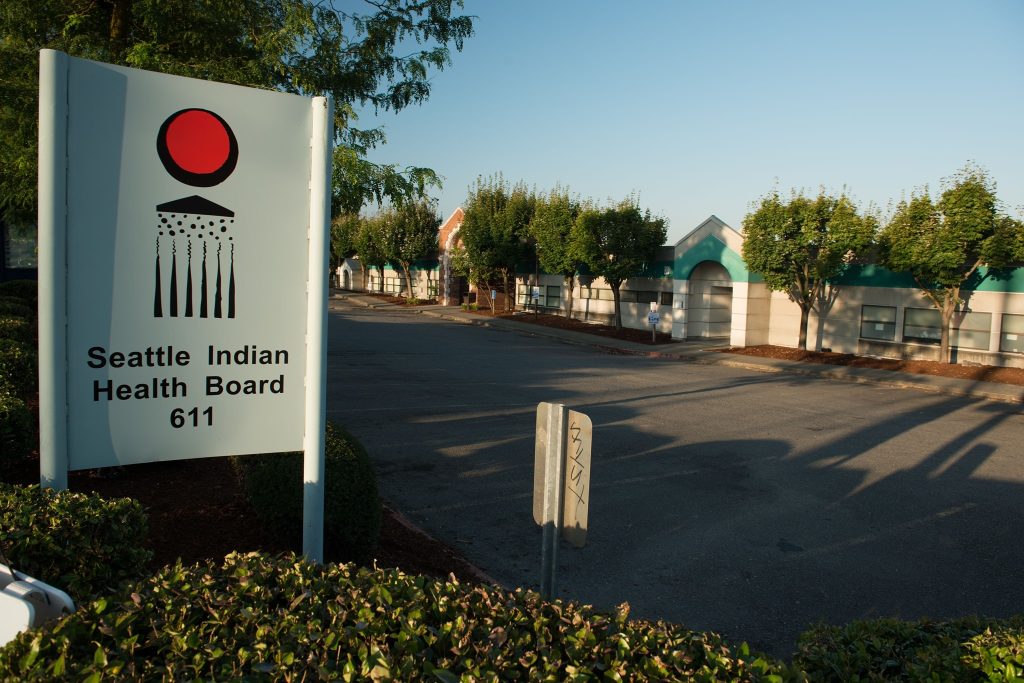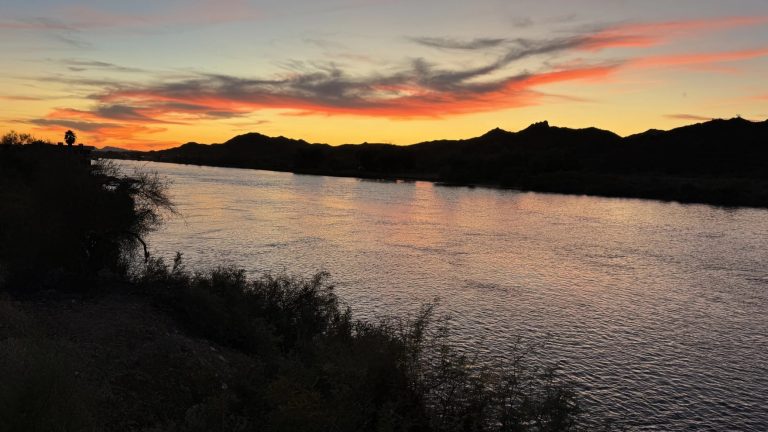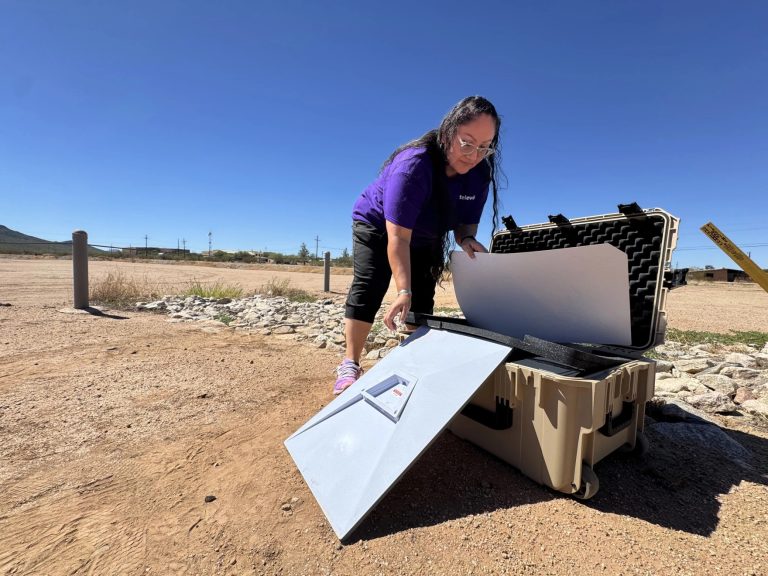Podcast: Play in new window | Download | Embed
The U.S. Department of Health and Human Services (HHS) announced over 70 public health officers will be deployed to Indian Health Services (IHS) facilities across the country.
IHS has faced staffing shortages serving 2.7 million Native Americans and Alaska Natives across the country.
Reporter Carolann Duro (Maara’yam & Kumeyaay descendant) has more.
In a request for comment, IHS Chief Medical Officer Dr. Loretta Christensen shared that nurses, providers, pharmacists, social workers, lab medical technologists, and engineers would be filling shortages at their facilities.
When asked about their preparedness, Dr. Christensen responded that all officers would be receiving orientation upon arrival.
Abigail Echo-Hawk, director of the Urban Indian Health Institute, provides insight on their training.
“There has been a consistent gap at IHS in providing culturally based on boarding and education for individuals who are new to Indian country.”
However, Echo-Hawk shares that there is progress being made after IHS visited her organization, Seattle Indian Health Board, to observe their cultural onboarding system.
HHS Secretary Robert Kennedy Jr. says this is part of his initiative to Make America Healthy Again, which Echo-Hawk says has been lacking.
“Because up until this point, Indian country has been just responding to the immediate changes that have been made across HHS. From the cancellation of individual grants to no knowledge of what’s going to happen with different programs.”
Deployments of the public officers will be assigned equally across Northern and Southern IHS facilities.
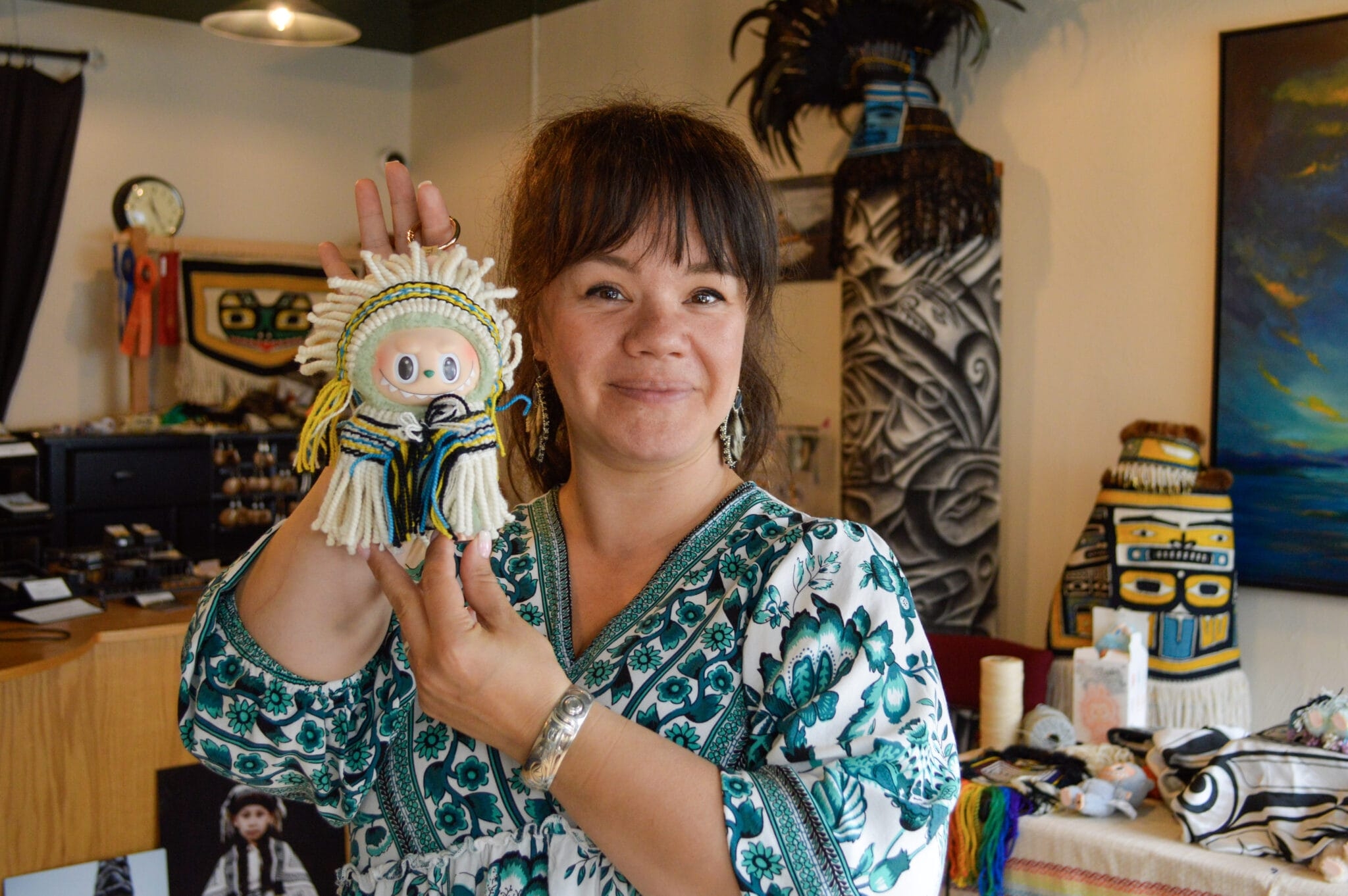
Master weaver Lily Hope holds up a Labubu decked out in Ravenstail weaving on Sept. 12, 2025. (Photo: Yvonne Krumrey / KTOO)
A Lingít master weaver is using the viral monster dolls called Labubus to bring attention to Chilkat and Ravenstail weaving.
KTOO’s Yvonne Krumrey saw the regalia-clad dolls herself and has more.
In Lily Hope’s shop in downtown Juneau, she holds up a tiny doll with an evil grin.
“Some people are like, ‘Why? Oh, please no. Why? What an ugly monster.’ And other people are like, ‘Oh, please let me have one.’”
Her shop is filled with pieces of weaving: earrings, formline robes, and pictures of models in more weaving.
On her desk lies a green doll wearing a Ravenstail headdress, woven in pink, white, and blue yarn.
“This one is Trans Pride requested from an art collector in New York City.”
Hope is a master weaver. She has dedicated her life to reviving Chilkat and Ravenstail weaving, and through apprenticeships and classes, she’s helped hundreds of Alaska Native people form their own weaving practice.
She’s also a mom of five — and those two worlds collided when her kids started asking for Labubus.
“My three small children introduced me to the dolls and said, ‘Please, Mommy, please, mommy, buy these for us.’”
You may have heard of them.
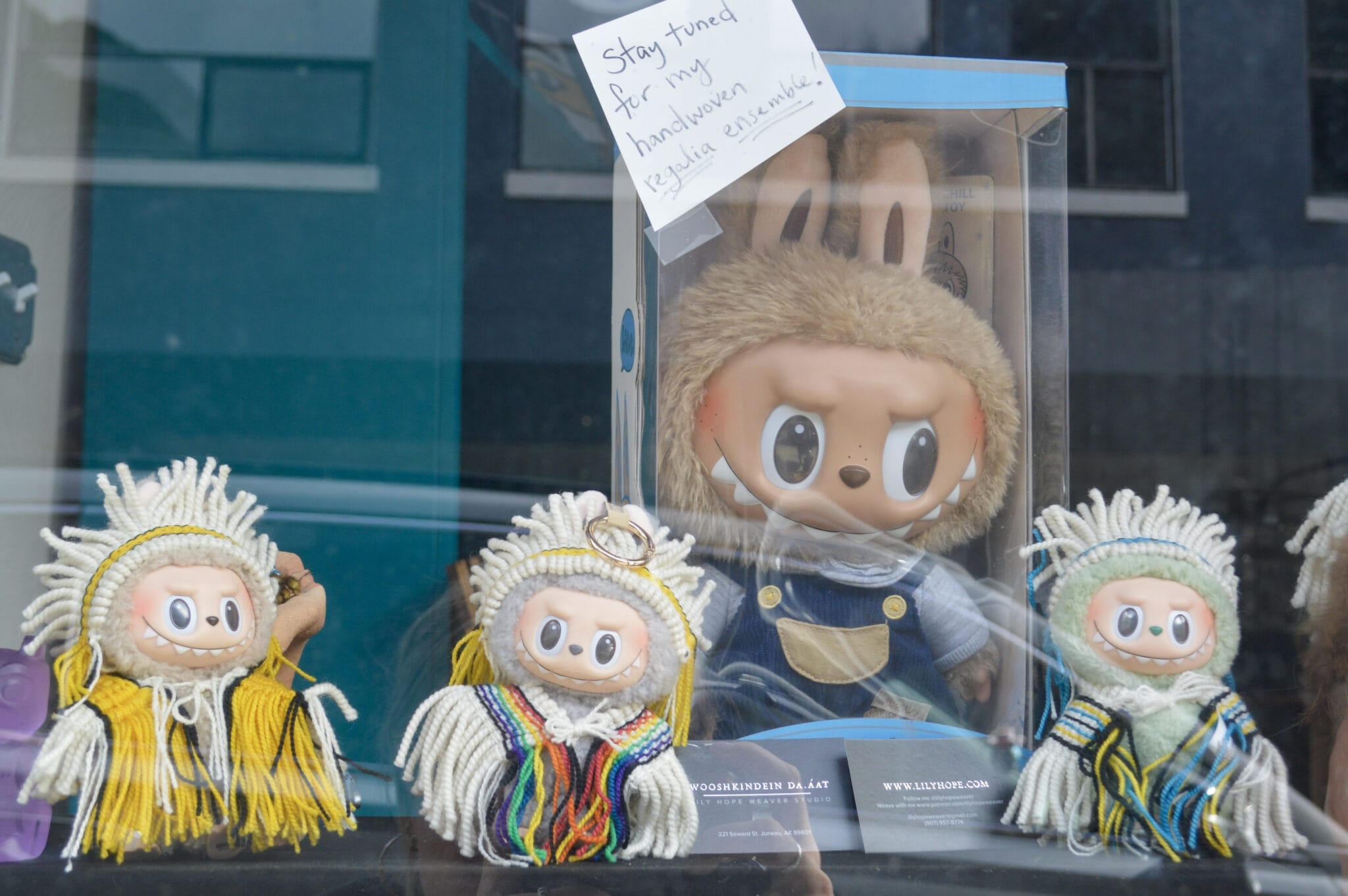
Labubus in Ravenstail weaving on display at master weaver Lily Hope’s studio on Sept. 12, 2025. (Photo: Yvonne Krumrey / KTOO)
The dolls are all over the internet, with their fuzzy bodies, big colorful eyes, and pointy teeth. They are based on storybook characters.
Hope says they come in “blind boxes” — generic packaging that leaves the contents a mystery — so part of the fun is finding which Labubu is in the box.
“Oh, yes, this is the whole rage, right? It’s like, oh, I got lychee Berry. Oh, I got, I got the green grape. Oh, now we need to get soy milk, Mama, let’s get soy milk..”
But in the craze, she saw an opportunity to continue to push Northwest Coast weaving into the spotlight.
“When somebody sees an Indigenized Labubu in a Ravenstail regalia, they can be like, ‘Oh, where does that come from? Oh, what are those? Oh, what is Ravenstail weaving? It’s related to Chilkat? Let’s go.’”
Hope’s doll-sized regalia sets go for more than $600 and fine arts collectors all over the country are ordering them, but for those who don’t want to shell out that much, Hope also sells kits for people who want to weave their own outfits for a doll.
“It’s a way to get the work further into the world. And kind of, you know, capture some people who wouldn’t necessarily come to Ravenstail weaving otherwise, but are like, ‘Oh, this is a way that I can dress my Labubu in traditional regalia, and I made it myself.’ That’s huge.”
It’s a way of weaving your own story into the trend. And the little monsters look pretty cool, too.
Get National Native News delivered to your inbox daily. Sign up for our daily newsletter today.
Check out the latest episode of Native America Calling
